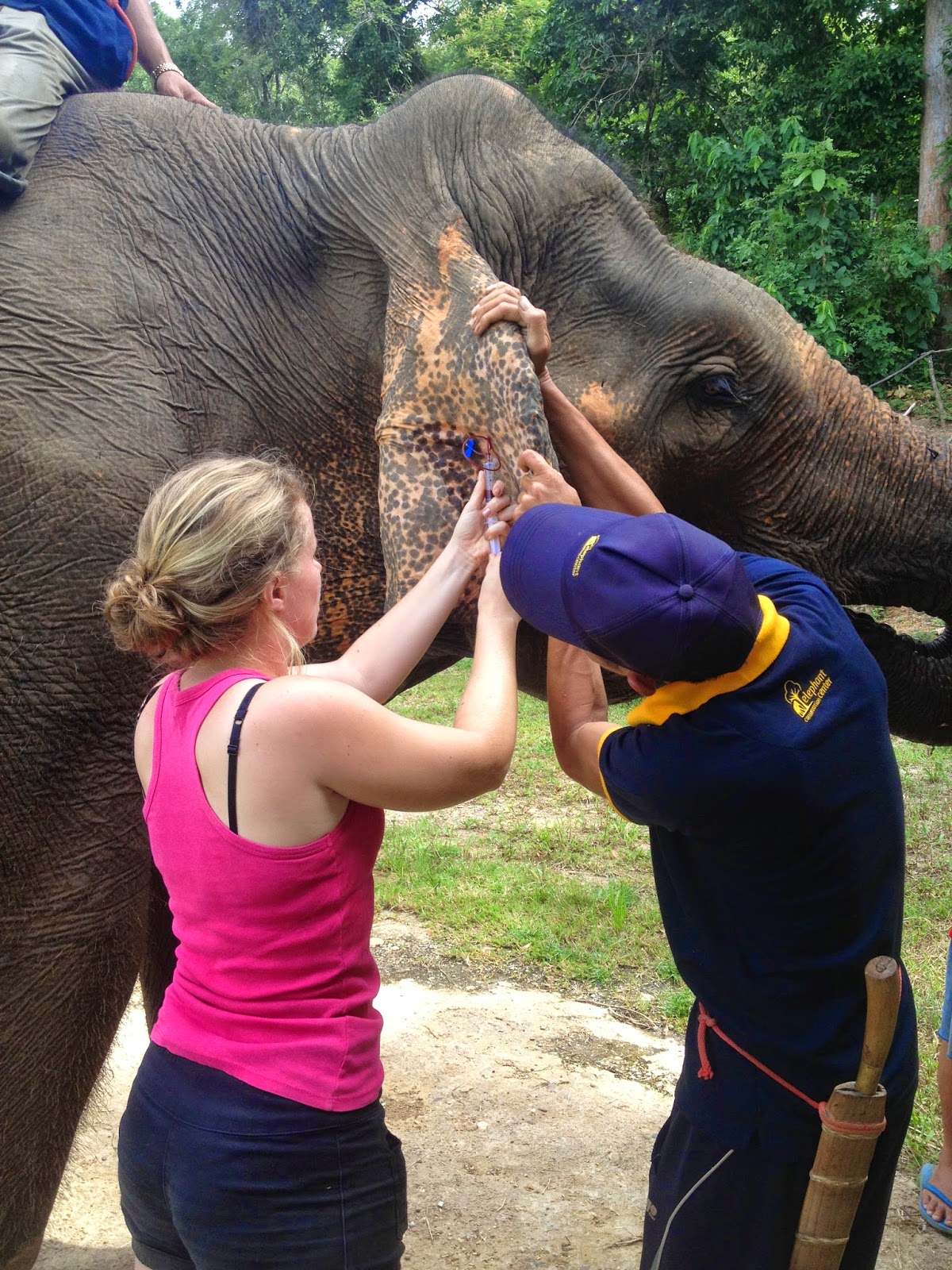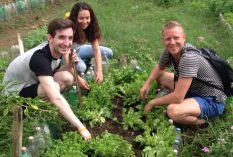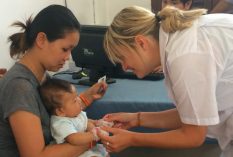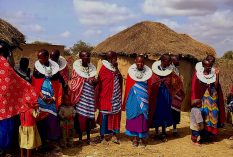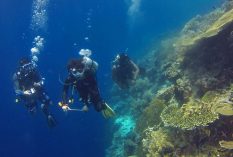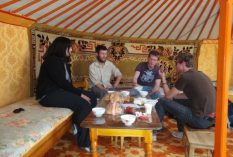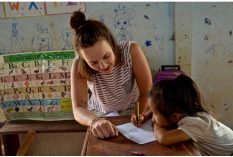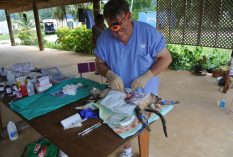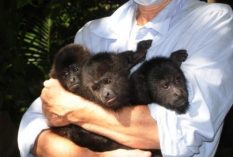“As a pre-veterinary student at a liberal arts college, I generally have to go out of my way to discover veterinary options around my university. Therefore, imagine my surprise when my search results for a veterinary internship for the summer on my school database turned up “Asian Elephant Veterinary Course – Laos” on the Global Nomadic site. My first thought was how amazing it would be to work with elephants – I’ve loved elephants since I was very little. Then my thoughts turned toward the almost abstract concept of journeying to Laos, some random country in Southeast Asia about which I knew very little. I concluded it would be an adventure and decided to apply in case it worked out for my summer. It did.
Global Nomadic did a lot to help me out with the planning. They provided an airlines organization, a recommended travel insurance site, and information on such international outdoorsy travel. They reminded me when payment was due as well. I was very nervous about going to a third-world country, but my contact at Global 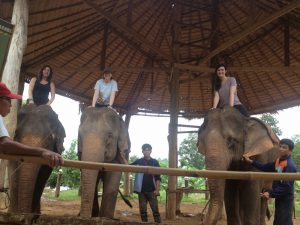 Nomadic provided in-depth and reassuring answers to all my questions.
Nomadic provided in-depth and reassuring answers to all my questions.
In the months leading up to my internship, I was busy preparing for my trip to Laos. I had to make sure I had adequate airline transportation, visa requirements, and travel insurance. I also did my own research on the currency, phone, and electricity situation. I had some doctor appointments to get vaccinated (typhoid, hepatitis A, Japanese encephalitis, rabies) and to get prescriptions (azithromycin for potential traveler’s diarrhoea and malaria pills). I did research on the customs and weather of Laos. I also had to make several shopping trips to get adequate clothing and supplies for the jungle. It was quite a process getting prepared to go, so I was very ready when the time came to leave for Laos.
T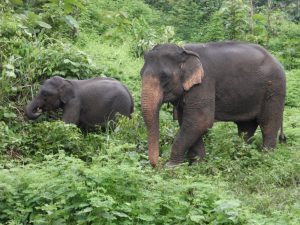 he Asian elephant veterinary program in Laos was more incredible than I could have possibly imagined. The way to and from the country was rough but still exciting. On the way there, with over 36 hours of traveling, I went from Atlanta to Seoul, South Korea (awesome airport) to Hanoi, Vietnam (not as nice) to Luang Prabang, Laos (tiny airport); the way back two weeks later was smoother and shorter, with only 28 hours of traveling. Laos itself was an absolutely beautiful country, with its green mountains and valleys. I stayed in Luang Prabang, a small but cosmopolitan little city, at the beginning and at the end of my trip, and during this time I had Lao barbecue, went to Kuang Si Waterfalls, saw the monk alms-giving ritual in the early morning, received an authentic Lao massage, and visited the night market.
he Asian elephant veterinary program in Laos was more incredible than I could have possibly imagined. The way to and from the country was rough but still exciting. On the way there, with over 36 hours of traveling, I went from Atlanta to Seoul, South Korea (awesome airport) to Hanoi, Vietnam (not as nice) to Luang Prabang, Laos (tiny airport); the way back two weeks later was smoother and shorter, with only 28 hours of traveling. Laos itself was an absolutely beautiful country, with its green mountains and valleys. I stayed in Luang Prabang, a small but cosmopolitan little city, at the beginning and at the end of my trip, and during this time I had Lao barbecue, went to Kuang Si Waterfalls, saw the monk alms-giving ritual in the early morning, received an authentic Lao massage, and visited the night market.
For most of my trip, though, I was at the project outside of the tinier city of Sayaboury. The project is actually a tourist center, so new groups of tourists were constantly coming and going for their 3-day long program. The center is out in the jungle, requiring a boat trip to reach it because the roads leading to it are not good, with many many bugs, no air conditioning or fans, and no wifi. They own their own elephants (5 females, 1 male, and a baby), and the center’s veterinarian takes care of these elephants but also goes on mission trips to offer help to elephants across the country of Laos. In Laos, elephants are used for either tourism or logging, and each elephant has its own mahout (“elephant cowboy”) who knows it best and takes care of it.
For my veterinary program, I was mainly in contact with three other people: McKenna (20-year-old American girl), Sonia (29-year-old Portuguese girl), and Emma (28-year-old French girl – the center’s vet). I got so close to this group of people; it was leaving them that was the hardest. We got to work with elephants – I rode them several times (it’s not much like horseback riding other than being high on top of an animal with its own mind – they’re controlled with Lao words from the mahout – “pai” for go, “haow” for stop, “toy” for backward, “kwa” for right, “sai” for left, and “mep long” for kneeling down) and it was one of my favorite parts of my whole trip. Emma also taught us about many veterinary aspects – we had lessons on medical training, how to give physical examinations to the elephants, the reproductive system, the skeleton, foot care, the emergency box, tranquilizer darts, and poo and blood analysis. We saw day-to-day trainings and treatment. And one day we even got to visit a village way out in the country (based on the way the Lao kids stared at us, this was truly an aspect of Laos that very few people get to see) where we witnessed a logging elephant in action. Otherwise, while I was at the camp, I swam in the lake several times, experienced a Lao party complete with its Lao alcohol (Beerlao and lao-lao), hiked to a Buddhist temple, and visited the gardens where they grow food for elephants.
 From a cultural aspect, I enjoyed all I experienced. I learned a lot about the Lao way of life – always taking your shoes off before going into a building or house, being very friendly, saying “sabaidee” for hello and “khop djai” for thank you, going to bed early and waking up early, and taking it easy. But, since it was a tourist center, I met people from all around the world – mostly from France but also from England, Spain, Germany, the Netherlands, Switzerland, Canada, and Australia. I thought it was very neat how English was the universal language by which everyone was able to communicate.
From a cultural aspect, I enjoyed all I experienced. I learned a lot about the Lao way of life – always taking your shoes off before going into a building or house, being very friendly, saying “sabaidee” for hello and “khop djai” for thank you, going to bed early and waking up early, and taking it easy. But, since it was a tourist center, I met people from all around the world – mostly from France but also from England, Spain, Germany, the Netherlands, Switzerland, Canada, and Australia. I thought it was very neat how English was the universal language by which everyone was able to communicate.
This trip truly was once-in-a-lifetime. I loved being in Laos, meeting some good new friends, working with elephants, and learning new cultures. I feel like my horizons have really been expanded, and it makes me feel confident and excited for the next time I can travel to a totally new place – as cheesy as this sounds, it’s completely 100% true.”
Asian Elephant Veterinary Course – Laos

